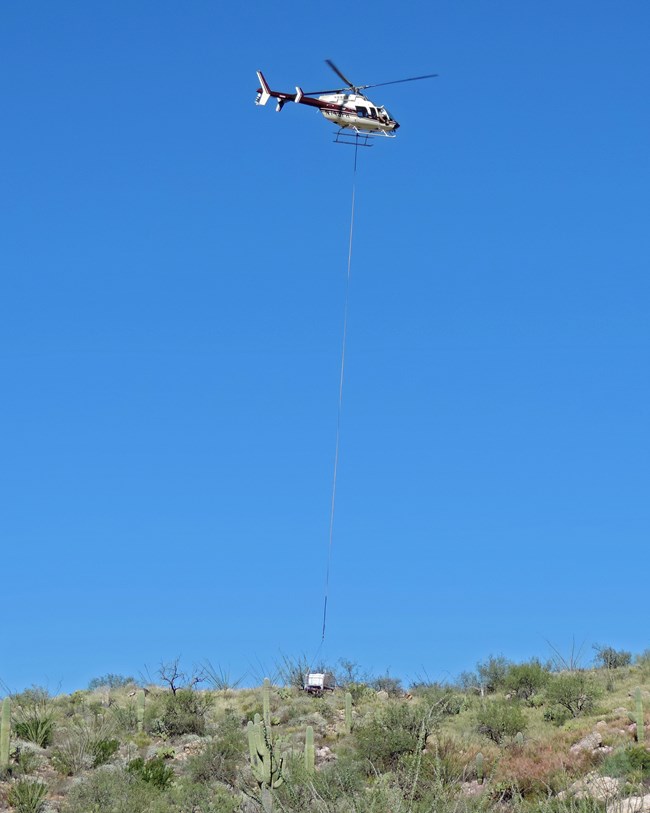Invasive Plant ManagementThe methods that we use are chiefly manual removal and chemical control. You may have seen teams of hardy buffelgrass removal volunteers, with gloves and tools, digging out the plants. Park Service staff and interns also apply an herbicide containing glyphosate during the growing season, when plants are over 50% green. 
Species-Specific ManagementIt is not a one-size-fits-all type of effort! For our efforts to succeed, we implement species-specific management strategies. We implement the most appropriate control technique for each species and site, considering the extent of the invasion and the threat it represents. We ensure that the control is environmentally safe and supported by research. Species-specific management strategies include:
Early Detection Rapid ResponseOne of the most important aspects of invasive species management is early detection and rapid response (EDRR). This refers to the practice of surveying and identifying invasive species and reacting to such identification in a speedy manner so as to combat the infestation as early as possible. StinknetStinknet is a recently-arrived highly invasive annual plant that has been located in limited areas of the park, but more widely in and around Tucson. Since its arrival in Arizona, stinknet (Oncosiphon pilulifer), a native of southern Africa, has taken over open spaces throughout the Phoenix metro area, quickly overtaking native wildflowers and forming dense stands that become major fire risks when they dry out. While stinknet is relatively new to Tucson and Pima County, local biologists are concerned about its rapid rate of spread and consider it to be the most dangerous invasive plant since buffelgrass was introduced in the 1930s.
|
Last updated: May 6, 2025
